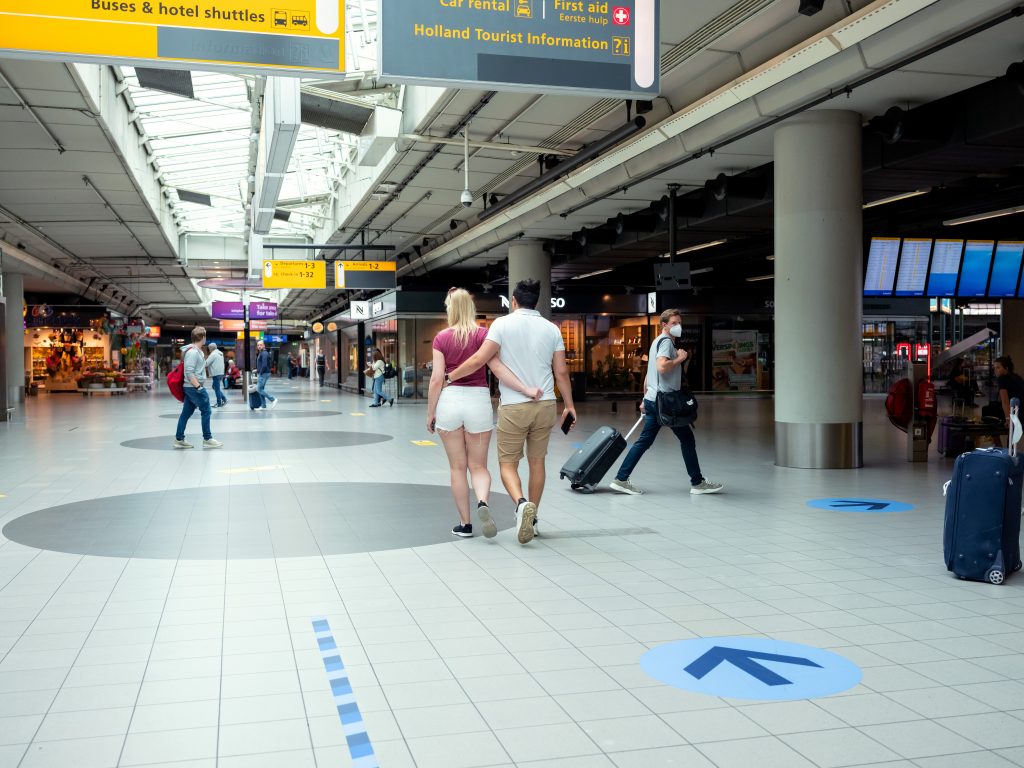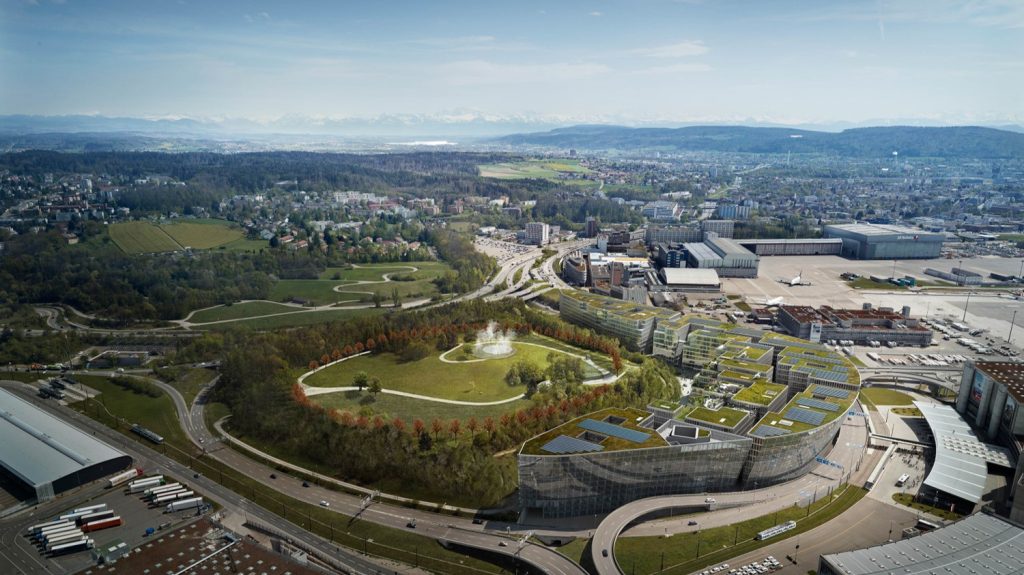The devastating impact of the ongoing Covid-19 pandemic on the air industry is all too apparent. As nearly 90% of airport revenues are passenger related, ACI’s forecast drop of 60% in passenger volumes for 2020 and a 60% reduction in revenues compared with the projected baseline (equating to a US$104.5bn loss) illustrate all too starkly the need for airports to diversify and move away from an overreliance on passenger-generating revenue streams to remain afloat.
According to Max Hirsh, managing director of Airport City Academy and research fellow at the University of Hong Kong, airports that rely heavily on a single income source – such as passenger and airline fees from a single carrier – have suffered more during the pandemic than those that have a broad portfolio of income sources. He suggests that successful airports balance passenger-related income (such as passenger facility charges, parking, car rental and travel retail) with non-passenger revenue (such as cargo, real estate and landside retail), which are less dependent on passenger numbers.
He adds, “To remain competitive, airports will re-evaluate their commercial revenue strategy and to do that they’ll focus on the needs and desires of their customers. Now is a crucial time for airports to ask themselves, ‘How are our customers changing, and how are their needs changing?’”
Real estate revenues
Many airports are looking to take advantage of their real estate to increase revenues, as the airport environment offers a plethora of land and convenient connections. “Real estate represents one source of revenue that could allow airports to counterbalance shortfalls in passenger-related revenues while leveraging their often hub-like position,” explains Kris Pauwels, director airport strategy and studies at Netherlands Airport Consultants (NACO).
Airports can consider many such real estate uses, from leasing out landside airport space and facilities to businesses and other organizations for temporary use for events and meetings, to offering warehouse space to e-commerce operators.
For some, this is also developing into more extravagant offers. “We are at a point in time now where airport cities and aerotropolises are – or are becoming – a viable financial reality,” says Pauwels. “Airport cities not only allow for the multifunctional use of space and the creation of avenues for non-passenger revenue but also provide opportunities for the local community, trade and commerce and the creation of a more sustainable business model.”

This idea of the creation of districts is most evident in examples such as Changi Airport’s The Jewel and, more recently, Zurich Airport’s Circle, a new district that opened in November and includes a meeting center, shops and restaurants.
The Zurich launch has also seen the debut of the Park, an outdoor space for visitors, employees, local residents and passengers, which Zurich Airport says expands its appeal as an excursion destination.
This idea of using the airport infrastructure as a destination through more creative thinking that attracts both locals and visitors from further afield is key to generating non-passenger-related income, according to Richard Gammon, managing director, global aviation EMEA, for AECOM. “It’s about engaging with the community. If you are going to take the view that the airport is a destination or an attraction in its own right, then the only way you will establish that is knowing your audience and your community,” he says.
Gammon encourages airports to expand their ideas beyond the obvious alternative uses. “Creativity is what lies at the heart of all this,” he explains. “Airports have to get out of the ‘we are just an airport’ box and start thinking more broadly. A lot of the buildings on an airport are essentially just big sheds that are fitted out in different ways. They could be exhibition centers, indoor play spaces or any number of different uses.”
As well as exploiting real estate, successful airports are ramping up their cargo operations to claw back revenue. Although the sector is somewhat dependent on passengers, NACO’s Pauwels says that it has proved more resilient than expected. “Some airports have taken the opportunity to renew or even sharpen their focus on air cargo as the crisis has accelerated the development of e-commerce and the role of air cargo itself,” he comments.

Short-term solutions
The biggest obstacle to the revenue-generating opportunities of real estate or cargo volumes is that they take time to implement, which means the short-term options are limited. “It’s tough for airports to do much in the short term because diversifying your offer is not something that you can do overnight,” says Rian Burger, senior principal, buildings, at design firm Stantec. “It’s probably at least two years before you see anything if you start now. There’s no quick money tree that you can pick things off.”
Instead, many airports have stopped any sort of spending that may be discretionary, or are relooking at existing spending to improve financial resilience. “The overall message is to be smart about how they spend,” says Mitch Hooper, department manager, aviation, at US consulting and planning firm Mead & Hunt. Vancouver International Airport is one such example, with Vancouver Airport Authority announcing in September that it would be terminating its CORE Program, a large infrastructure project it was undertaking to build the airport of the future.
Although change takes time, Pauwels believes that airports need to closely examine their future opportunities and start planning and initiating discussions where they can. “The most important step in the short term is to start the process of identifying and assessing the sources of potential non-passenger-related and diversified revenues. Initiating talks with local businesses, local governments and hotels may be a route in,” he says.
Hooper suggests that airports can use the time now to do the groundwork for the future: “Airports may need to get approval and do an environmental review. These things can be undertaken now so that when the markets come back, the airports will be poised for success because the paperwork will be done.”
However, Stantec’s Burger warns that there isn’t a one-size-fits-all solution and says that airports must also be looking at their specific situations, rather than simply copying what others are doing: “They should be reassessing their business model and revenue streams and looking at what defines their business. That’s the key because no two airports are the same and what will work for airport A won’t work for airport B and might be detrimental for airport C.”
He says it’s about finding opportunity: “If you can redefine your core business then you can go out and look at all the opportunities that are unique to your airport. Then you can create more of an ecosystem of supporting businesses and all work together to protect that core business, and then you have resilience. It’s like an investment portfolio.”
And that core business definition is unlikely to have the words ‘air travel’ in it, according to Burger. He argues that airports should think of themselves as ‘connection facilitators’ instead. “Their business is to connect people and things and places to one another,” he says.
Airports such as Dallas/Fort Worth International (DFW), which describes itself as ‘the global, world-class superhub that warmly welcomes travelers on their journey to discover, connect and grow’, are already doing this. “It comes down to being a port business – a portal that is agnostic of the mode of transport,” explains Burger.
This idea of being a general transportation hub becomes even more ambitious when we look to the distant future, according to NACO’s Pauwels. “Transportation hubs could potentially be expanded with new transport modes like the hyperloop. In Bangalore, for example, a hyperloop is expected to be in place within the next 10 years. Amsterdam Airport Schiphol has also recently announced expansions in its involvement in hyperloop development. Whether hyperloops or high-speed trains are put in place, we will inevitably see stronger interconnections between surface and air transport in the future,” he adds.

How far is too far?
Most believe that diversification is a must to help ward off future threats, as well as to recover from the pandemic. “As the post-Covid business model begins to take shape, prioritizing non-passenger income will deliver substantial benefits to the entire aviation industry,” says Hirsh.
Analysts at Fitch Ratings, however, point out that the pandemic is a rare, unforeseen occurrence and that airports should ensure they don’t get completely distracted from their core skills. They also point out that although initiatives such as real estate development could prove lucrative, they will depend on demand from other businesses and the same general economic situation and restrictions that are hampering the airport industry. “It’s about assessing the risks of the project – for example, with real estate, analyze the development costs against the returns and think about the extent to which this venture may or may not truly provide a genuine revenue stream,” says George Abbatt, director of global infrastructure ratings at Fitch Ratings.
“Whatever airports do it will be hard to get away from passenger numbers,” says Alexey Kobylyanskiy, associate director, global infrastructure ratings, at Fitch Ratings. “Currently, about 90% is passenger driven, the rest is usually co-related, such as a hotel or a specific offering like a business park, which are a feature of the catchment area of the airport. It will be hard to walk away from the passenger-driven business model.”

